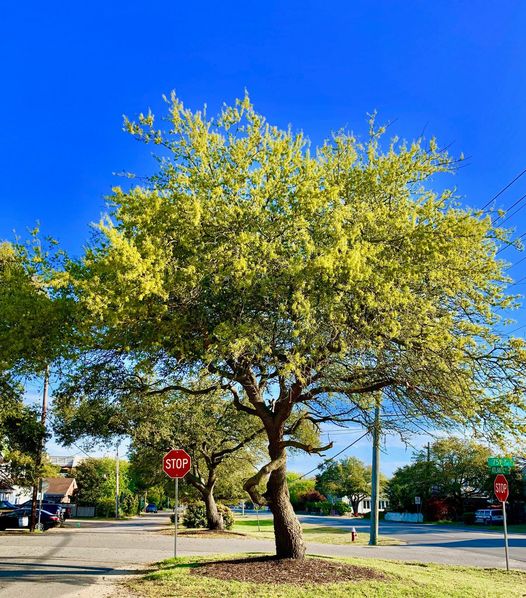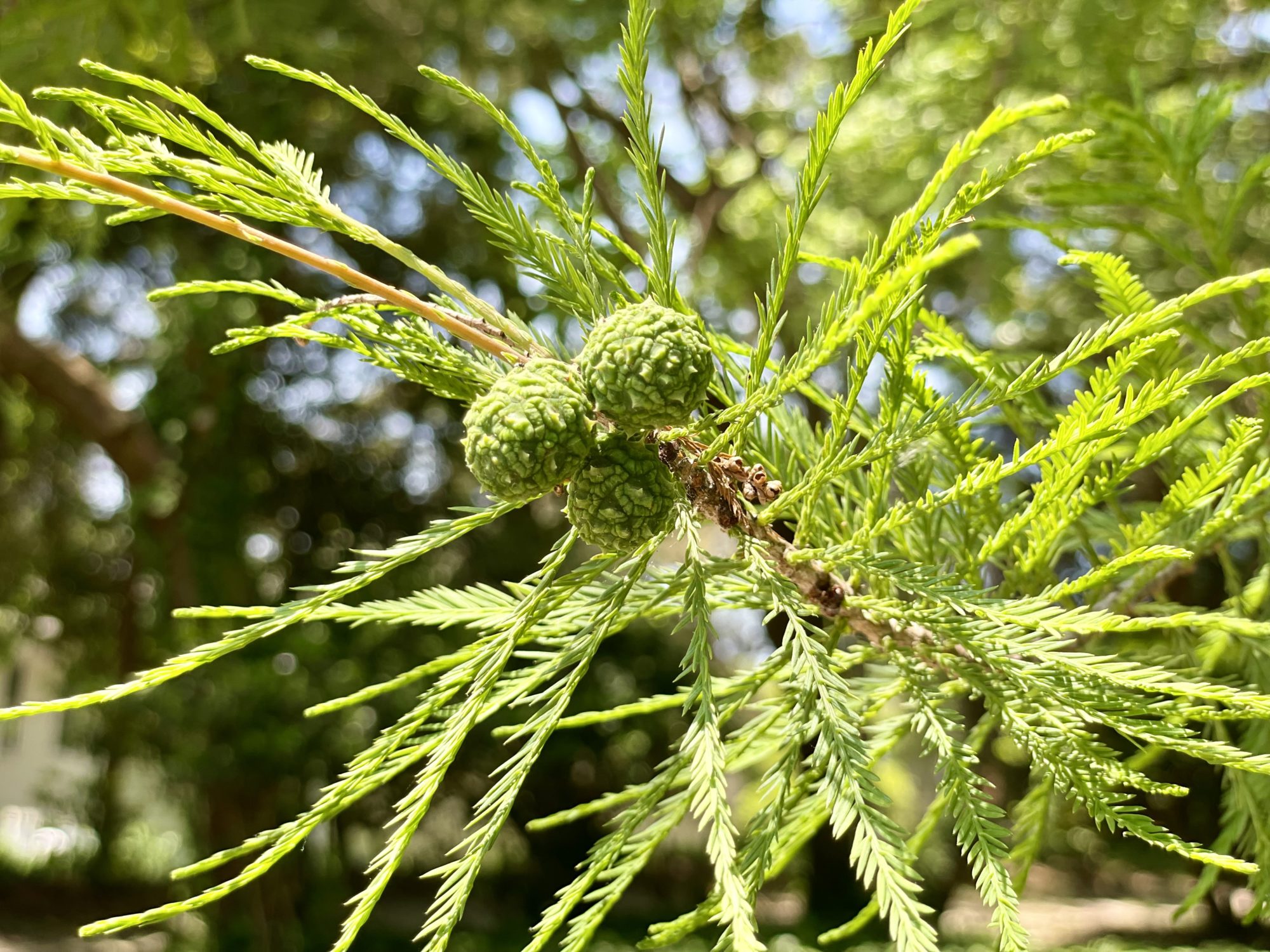
By Mary Reid Barrow
Meet the odd couple of our local tree world.
These strange bedfellows, the live oak and the bald cypress, are two beloved natives in our treescape here in Virginia Beach. The two are totally different yet have a lot more in common than where they grew up.
Go look at them now. Beautiful spring green, tiny, needles and cones are coming in on the bald cypress branches. And the live oaks are a shiny spring green too. Their dark green leathery leaves are nowhere to be seen for now.

The live oak’s and bald cypresses’ May finery makes them brethren in one sense, but a lot of trees also are spring green this time of year.
What makes the live oak and the bald cypress different is that they are both rebellious offspring in their families. In winter, neither tree obeys the rules.
The live oak does not lose its leaves in the fall and stay bare all winter, as red and white oaks and most other oak species do. Live oaks lose their leaves in one fell swoop in early spring as their new leaves also are coming in.
Thus, its name, LIVE oak, because it stays green all year round.
On the other hand, unlike its evergreen relatives such as pine trees and red cedars, the bald cypress is not green all year. It rebels against its upbringing by losing its leaves in the fall. The tree is so starkly bare in winter that some think it’s dead.
Thus, its name, BALD cypress, because it is bare all winter.
The two may be rebels and they are different in size, shape but both are storm resistant trees that contribute so much to the environment here in Virginia Beach by protecting us from flooding and sea level rise.
Tall, stately bald cypress slow flooding by soaking up the water where they grow along rivers and streams. They even build up land around their stumps , creating small islands in the middle of the water.
In the coastal environment, sturdy, spreading live oaks also can soak up gallons of water a day and even more in times of flooding.
Though both have different natural habitats, both do well in neighborhood yards. Cypress trees must begin life on dry land and though they are most often found growing in the water, they also can thrive on dry land.
Live oaks are mostly found in the maritime forest habitat but they too make great yard trees and appear to take root where ever a squirrel plants one of its acorns.
The two also have wonderful qualities in common with other trees. They add beauty to our lives Their huge canopies shade us and keep the Earth cool in summer. They help us breathe by taking in pounds of carbon dioxide every year and releasing oxygen in return.
Truly an odd couple, the two trees find common ground not only in their rebellion but also in protecting us and our coast.